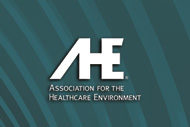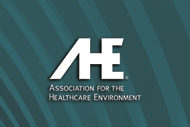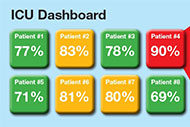Improving service quality and patient perception starts with a team-based culture. In a Press Ganey survey of Top Drivers of Patient Satisfaction, the No. 1 driver was “How well staff worked together to care for you.” Make certain that environmental services staff understand that they are part of the team.
Individual efforts greatly influence service quality and the perception thereof. Analogous to a baseball team, every encounter with a patient or assignment to clean an area is an opportunity for the environmental services attendant to hit that home run.
In his book If Disney Ran Your Hospital, Fred Lee makes a profound statement about competition and customer loyalty: “The truth is that our competition is anyone our customers compare us to,” he writes. So, instead of limiting your benchmarking to other hospitals, recognize that patients may very well compare hospital services with any experience that includes an overnight stay, even a hotel.
Given this, hospitals should strive to deliver service worthy of the Ritz-Carlton. According to the Ritz-Carlton, its guest experience “instills well-being, and fulfills even the unexpressed wishes and needs of our guests.” Replace the word “guests” with “patients,” and you find undeniable alignment with hospitals.
Set individual quality standards based on what the patient would expect, and as if that patient is family. Fastidiously and immaculately clean your assigned area(s) each and every time.
Keep in mind the specific HCAHPS survey question: “ … how often were your room and bathroom kept clean?” Perception is reality, so consider leaving a tent card or business card if the patient isn’t there when you clean.
Keeping with the Ritz-Carlton theme, here are its Three Steps of Service, customized for the health care setting:
• A warm and sincere greeting. Use the guest’s name. A nice genuine smile is priceless, and calling a patient by name can make him or her feel special and more comfortable.
• Anticipate and fulfill each guest’s needs. Even if it’s getting ice or dimming the light, and even if it is not usually perceived as your job. At the very least, find the attending nurse for assistance.
• Give a warm good-bye. Be sure to ask the patient if there is “anything else I can do for you at this time?”
Routinely talk with staff about service. Along with patient and workplace safety, make certain service and quality are discussed in every staff meeting, shift huddle and manager’s rounding. The work and passion of the environmental services department soon will be reflected in quality, perception and HCAHPS results.
Lloyd Duplechan is a retired hospital chief operating officer and is owner and principal of the health care environmental consulting firm Duplechan & Associates.
AHE INSIGHTS
Practice guidance available
Practice Guidance for Healthcare Environmental Cleaning, second edition, helps to define and advance the professionals responsible for care of the health care environment to ensure high-quality outcomes and healthy communities.
This manual provides evidence-based research, guidance and recommended practices that should be considered for inclusion in health care environmental services departments. Because each facility has its own needs, this resource has been designed to enhance an existing program.
For more information, visit www.ahe.org/ahe/learn/tools_and_resources/publications.shtml.
Certified Healthcare Environmental Services Technician Certificate
This certification focuses on critical areas of competency for front-line technicians, including infection prevention, quality of care, patient outcomes and experience.
For more information, visit www.ahe.org/ahe/lead/CHEST/chest_home.shtml.
Environmental Sustainability Certificate Program
AHE has launched a certification to acknowledge the environmental and ecological sustainability efforts of environmental services departments.
For more information, go to www.ahe.org/ahe/lead/environmental_sustainability_certificate_program.shtml.





